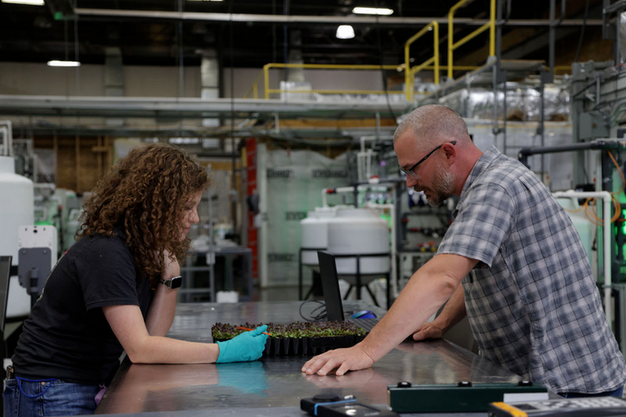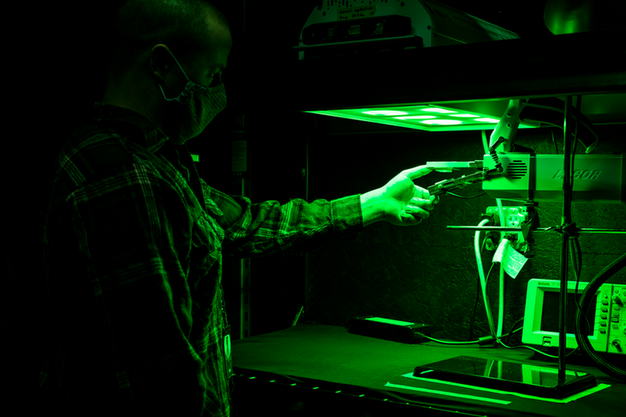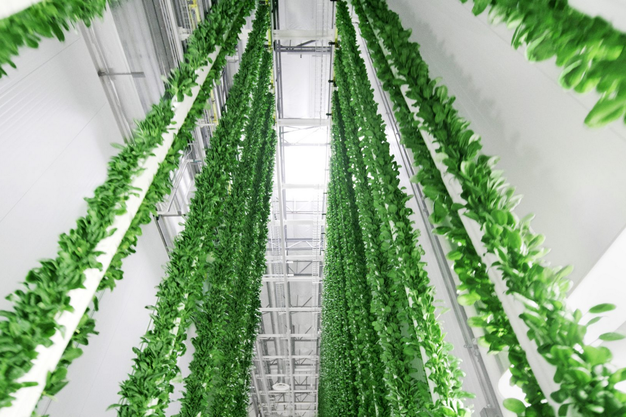"We've been working on this platform for over a decade and this is a groundbreaking version of our R&D platform. We're ushering indoor agriculture into the AI age. Plenty's new Wyoming facility is set to double our research capacity," says Arama Kukutai, CEO of Plenty, commenting on the vertical farming company's recent expansion announcement.
Featuring over 50 different growing rooms, each deployed with automation, data capture, and camera vision technology to monitor plant health and development, Arama clarifies that this is all possible through Nate Storey and Sasha Preuss' groundwork.
One of the most exciting aspects of the Wyoming facility is its ability to run crop cycles faster than traditional greenhouses. "We can complete multiple growing cycles per year, accelerating our research. For instance, in tomatoes, we can complete four cycles a year, as opposed to the one cycle typically done in conventional environments. That allows us to gather more data and make quicker, more informed decisions on crop development."

Sasha Preuss seen in the Plenty R&D center
Innovation through collaboration
Arama emphasizes the company's commitment to working with partners, such as universities, tech companies, and suppliers from around the world, building on the model that's seen at Wageningen University in the Netherlands. "By partnering with global universities and Dutch companies, we're creating an ecosystem that combines academic research and commercial scalability."
He also highlights the role of partnerships with local entities, such as the University of Wyoming and the state of Virginia. "The support we've received from state-level partners has been critical. From providing capital to making connections with local universities, this collaboration has helped us push our R&D capabilities forward," Arama says.

Inside Plenty's R&D facility
Beyond horticultural crops
While Plenty is known for leafy greens and its recent partnership with Driscolls on strawberries, the company has big ambitions. With not just being focused on horticultural crops, "there is an opportunity to use plants in ways we haven't seen before," Arama explains. "Whether as biofactories for producing molecules or as natural ingredients for food manufacturers looking to replace artificial products with fresh, sustainable alternatives."
In addition to leafy greens and strawberries, Plenty has successfully grown over 50 different crops at its research center. Each crop program the company develops acts as a 'flywheel of experimentation'. The process begins with screening candidates and analyzing their phenotypes and genotypes. Learnings from these experiments are then applied across various crops, including tomatoes and potatoes.

"The speed and scale at which we can run these experiments are unlike anything we've seen before." Therefore, Arama believes that this R&D center is a template for future facilities. "We've designed it to be replicable, allowing us to scale our research across multiple locations worldwide. Our goal is to create a network where we can share data, run experiments, and continuously improve our processes."
According to Arama, this new facility will also play a crucial role in Plenty's partnerships with global research institutions. "We're excited to see how this center will interact with our partners in the Netherlands, the U.S., and beyond. It's not just about what we can do here, it's about building a research ecosystem that stretches across the globe."
Eyes on profitability
With a more than $2130 million investment into this facility, Plenty is committed to ensuring the project's long-term profitability. "This is a scalable, sustainable model. Every farm we build is more efficient than the last, and we're constantly refining our processes to reduce costs. We're here to revolutionize indoor farming. With this facility, we're taking the next step in driving innovation, sustainability, and profitability, not just for leafy greens and strawberries, but for a wider range of crops, and ultimately, for the future of food."

For more information:
Plenty
[email protected]
www.plenty.ag
